No matter how effective it is to heat plasma with coils, antennas, and electron guns, it is still not the best way to accelerate gas. It would be much more efficient to provide a specific impulse to the engine using a nuclear reaction. Let’s think about whether detonating an atomic bomb would be enough for interstellar travel.

One percent of the speed of light
Using plasma and ion engines, we could achieve remarkable results. Forty days of flight to Mars, which the VASIMR developers promise us, is extremely fast. We will think so until we realize that Mars is literally next door to us by space standards. The same plasma engine will “drag” a ship with a crew to Jupiter for many weeks, and to Neptune for several months. What can we say about flights to other stars, which, even with the use of such engines, will take hundreds or thousands of years.
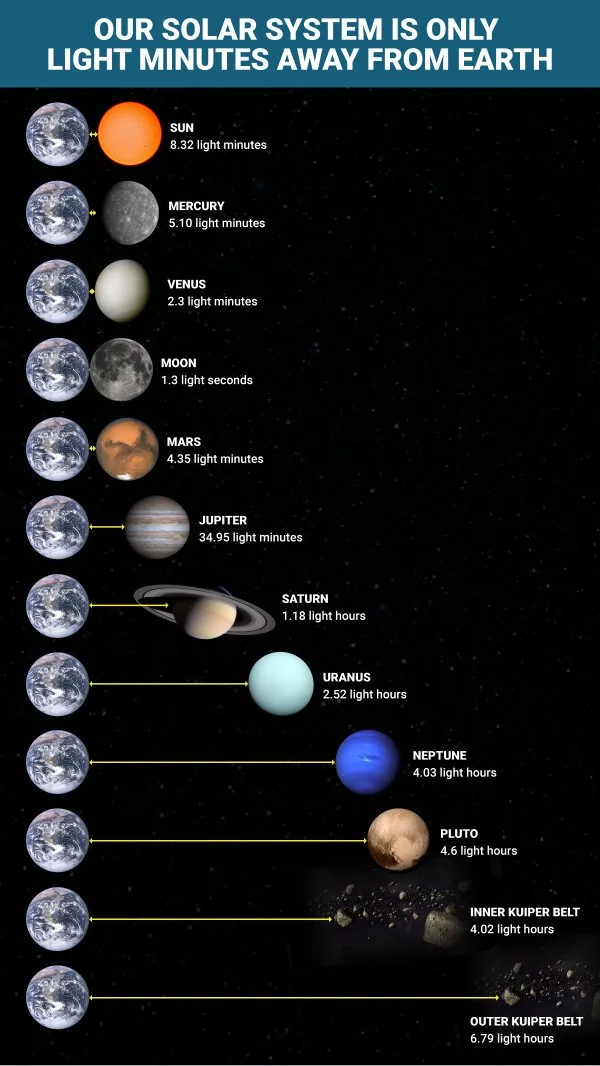
In fact, to travel such distances, we need to learn how to accelerate to at least one percent of the speed of light. It would seem that this one percent is a lot, but even within the solar system, it does not lead to instantaneous movement. If the ship were to reach one percent of the speed of light, it would take 2.5 to 4 days to travel as close as Jupiter from the Earth. The journey to Neptune will take 2-3 weeks, and there are bodies on the outskirts of the Solar System that will take a couple of months to reach. As for the other stars, it would take about 425 years to reach Proxima Centauri at this speed, and Sirius is almost 1000 years away for such a ship!
And yet, for people to be able to explore the far reaches of the solar system in the future, we need approximately these speeds. But even if we take the most efficient plasma engine and build a huge ship in orbit, most of the mass of which will be the working fluid, it will still be difficult for it to accelerate even to half a percent of the speed of light (i.e., up to 1500 km/s).
How to tame nuclear energy?
The usual acceleration of plasma heated to hundreds of thousands of degrees gives too little specific impulse. The use of nuclear energy could help overcome this problem, because the reactions of fusion or fission of atomic nuclei involve energy densities much higher than all other methods of energy production we know. The only problem is that there are currently no technologies for continuously maintaining nuclear or fusion reactions of the required power, and it is even more difficult to build a jet engine based on them than a plasma engine.
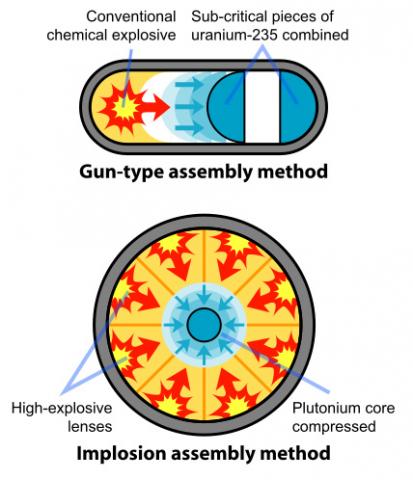
The simplest atomic bomb designs
But humanity has mastered one method of producing high density nuclear energy quite well. This is a nuclear explosion. It would seem that it sweeps away everything in its path, but many years ago engineers came to the conclusion that it could still be used to push a ship through outer space.
That’s how the idea of a pulse nuclear engine was born, and it has been in the imagination of space dreamers for decades. And although no nuclear pulse propulsion vehicle — i.e. a ship propelled by nuclear explosions — has ever flown into space, this does not mean that something similar will not be built in the future.
From Kibalchich to Orion
The idea of a pulse propulsion vehicle arose at the very dawn of rocketry, long before the first atomic bomb was tested. And, strangely enough, one of the pioneers here was a Ukrainian, a self-taught explosives engineer, a native of the town of Korop in the Chernihiv region, Mykola Kybalchych. He is best known as the designer of the bomb for the terrorist attack that killed Russian Tsar Alexander II. Today, only a suicide bomber would be interested in Kibalchych’s project, as the flight on an open platform above the chamber where the gunpowder charges are detonated would almost certainly be the first and last.

Kibalchych’s pulse propulsion vehicle
At the same time as Kibalchych, a German engineer, Hermann Ganswindt, who was considered a freak, came up with something similar. He proposed to create jet propulsion by sequentially detonating dynamite bombs. Of course, no aircraft was ever built according to this scheme, but it was Ganswindt’s work that was the basis for the work of the pioneers of German rocketry in the first half of the 20th century.
Stanislav Ulam, a native of Lviv and a graduate of Lviv Polytechnic, a mathematician and physicist who emigrated to the United States and became one of the creators of the American nuclear bomb, rethought the idea of an explosive flight using nuclear energy. In 1946, it was he who proposed to make a spacecraft that would be powered by atomic explosions that would take place nearby. The following year, Ulam, together with Frederick Rains, performed calculations that confirmed the possibility of creating such a device. And in 1958, the Orion project was launched on the basis of these calculations.
The giant Orion
Everything about the Orion ship design is impressive. First of all, the gigantic figure of the gas escape velocity provided by the nuclear explosion (from 19 to 31 km/s, which is more than many state-of-the-art electric jet engines). Moreover, unlike ionic and plasma engines, whose thrust is measured in a few newtons or their tenths, the power of the Orion pulse nuclear engine reached millions of newtons.
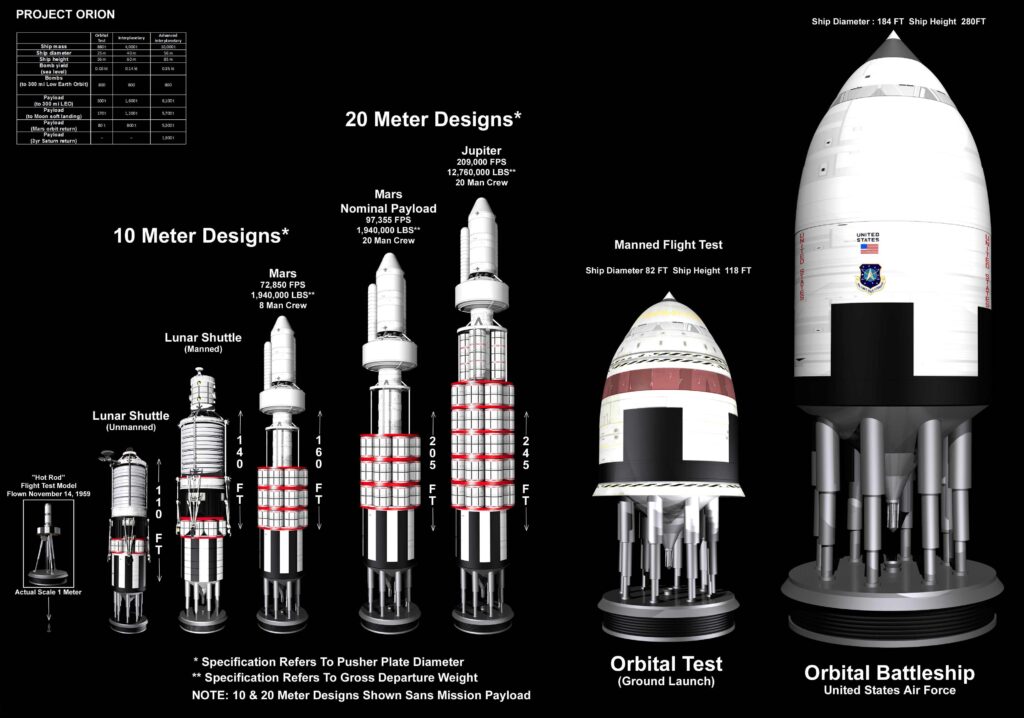
Variants of the Orion project
At the same time, the ship itself, even in its smallest version, had a diameter of 25 m, a height of 36 m, and a mass of 880 tonnes. That is, it was a giant nuclear barrel that could achieve such acceleration that it was considered primarily unmanned, because the crew would not have survived such accelerations. However, this ship was supposed to launch as much as 300 tonnes of payload into Earth orbit at a time.
This design was the smallest of the three developed in 1958 and was intended only for orbital flights. There was also the Interplanetary Orion, which weighed 4,000 tonnes with a diameter of 40 m and a height of 60 m. By comparison, the Falcon Heavy has a launch weight of only 1,500 tonnes at a height of 70 metres. And then there was the Advanced Interplanetary Orion with a launch mass of 10,000 tonnes and a height of 85 m. According to the authors’ plan, it could provide delivery from the Earth to the Moon and a soft landing on it with a cargo of 5,700 tonnes. That is, it was a vehicle that could deliver a small town to the Moon in one piece.
Is the impossible possible?
What was the secret of Orion? It was a miniature 0.03 kiloton nuclear bomb that was to explode just 60 metres behind the spacecraft. It was to be launched directly from the Earth, or rather from eight 60-metre high towers, between which it would drop its first nuclear charge. The light radiation and shock wave from the explosion were to be reflected by a massive armour plate at the base of the ship, which was several metres thick and had a graphite ablation coating.
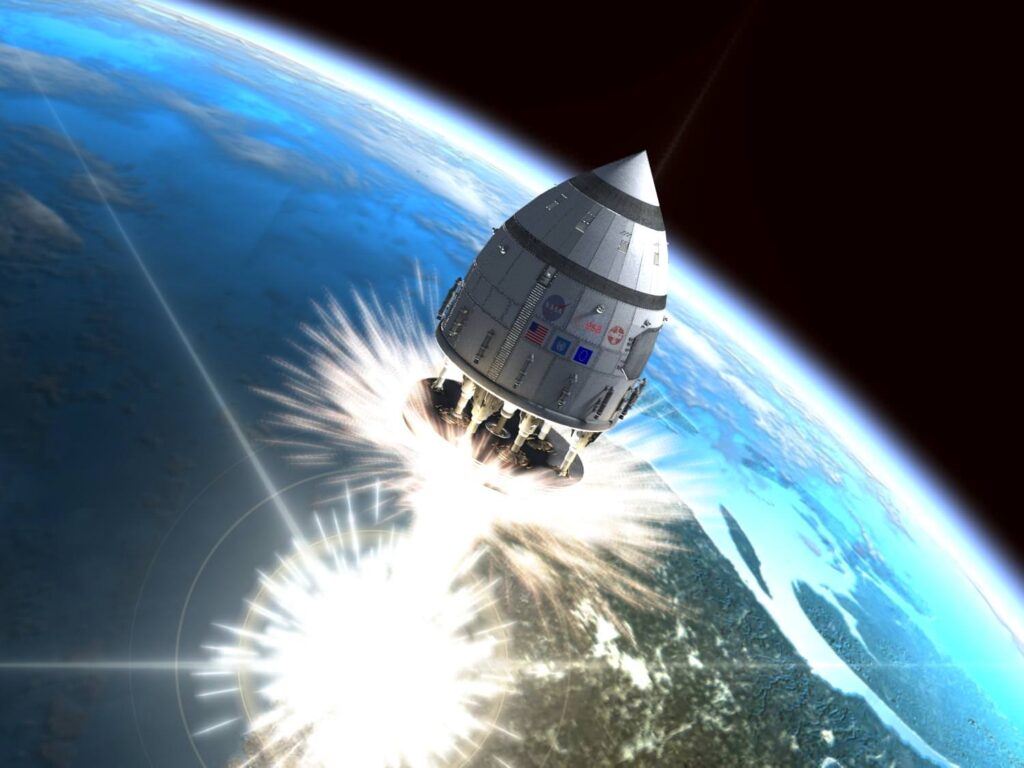
The launch of the Orion rocket (computer simulation)
The impulse generated by the explosion was to be dampened by eight giant hydraulic shock absorbers placed between the armour plate and the rest of the ship’s structure. There was also a second level of shock absorbers that reduced the “atomic jerks” to more or less acceptable values.
Moreover, it was only the explosion of the first bomb. In total, even the basic, “orbital” version of Orion would have to detonate 800 such small atomic bombs in the Earth’s atmosphere just to put its 300 tonnes of payload into orbit.
Field tests and problems
If what you have just read has caused you to have doubts, then even the creators of the project were tend to agree with you. However, it was carried out by the US military together with General Atomic, so they decided to overcome doubts experimentally. First, they tested a small model of the ship, which was accelerated by a series of non-nuclear explosions. It was found that at least six consecutive explosions could indeed provide a controlled flight of something similar to Orion.
Next, they tackled the most interesting question: would the plate melt? Fortunately, the US military was actively testing nuclear weapons at that time. So in one of the tests, large metal balls covered with a layer of graphite were placed just a few dozen metres from the epicentre of the explosion. After the explosion, the graphite evaporated, but the balls themselves remained intact, which proved the concept of the armoured plate.
The situation with the mini-bomb itself was much worse. The military did not advertise the minimum size of the bomb, and in the end, it turned out that the bomb was much larger than scientists thought. As a result, new projects were born, the smallest of which now had a launch mass of 300 tonnes and was designed to launch at least itself into orbit. Midrange Orion weighed up to 2000 tonnes, and Super Orion weighed 8 million tonnes.
A dream flight failed
In general, the scientists who worked on the Orion project did not limit their imagination and were worthy followers of Mykola Kybalchych. They developed the world’s first space battleship project, which, in addition to hundreds of bombs used as fuel, was to carry 500 warheads with a capacity of 200 megatons of TNT equivalent. There are also publications about the Doomsday Orion, a variant that carried only one warhead, but with a yield of 3 gigatons, which was about 50 times higher than the yield of the Tsar Bomb, the largest nuclear device in history, detonated by the USSR over Novaya Zemlya archipelago in 1961.
The “peaceful” projects did not stand still either. Ships capable of accelerating to 0.33 and even 3.3 per cent of the speed of light were developed. Moreover, the former was supposed to have a diameter of 20 km and a launch weight of 40 million tonnes, three quarters of which would be atomic bombs. According to conservative estimates by scientists, the implementation of this project would have cost one annual gross domestic product of the United States, but such a ship could have reached Proxima Centauri in 1300 years.
Meanwhile, the public around the world was becoming increasingly concerned about nuclear explosions, and USA decided to limit themselves. In 1963, the United States and the USSR signed an agreement that banned all nuclear explosions in the atmosphere, hydrosphere, or near-Earth space. This put an end to the Orion project, but not to pulse propulsion vehicles in general.
Thermonuclear Daedalus
Meanwhile, in the UK, the local Interplanetary Society was creating its own giant explosive project, albeit much less gigantomaniacal and more technological. It was called Daedalus. It was developed in 1973-1978 and was already tailored to a specific task — to deliver an automated vehicle to Barnard’s Star, which is located about six light-years away.
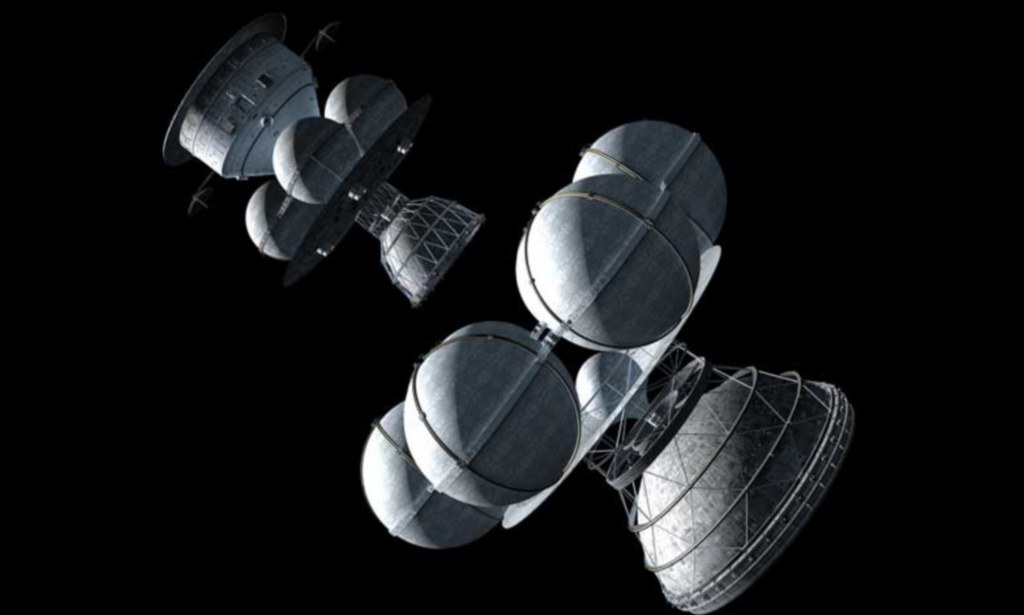
The Daedalus project
The times were completely different, and launching from Earth was out of the question, as was detonating atomic bombs in low orbit, where the electromagnetic pulse from them could destroy not only communication satellites but also the electrical grid on the planet. That is why Daedalus had no armour plate, but only a chamber with a magnetic coil inside, into which helium-deuterium pellets were thrown and detonated using high-powered electron guns. The plasma generated by the explosion was to be ejected through a nozzle equipped with its own magnetic coil. Its outflow speed was to be a fantastic 10,000 km/s.
The ship itself was planned to be built in orbit, and it was not small at all — 54,000 tonnes, of which 50,000 tonnes were fusion fuel. At the same time, its flight to Barnard’s Star was to be a two-stage one, similar to modern rockets. In the first stage, the ship was to accelerate to 7 per cent of the speed of light in two years, after which the upper stage would be disconnected, and the second stage would accelerate and maintain a speed of 12 per cent of the speed of light until the end of the flight. There were no plans to slow down the ship. So, in just 48 years, such a spacecraft was supposed to reach another star. Of course, the project was unrealistic and eventually it was cancelled.
Longshot and Medusa
In 1987-88, the United States returned to the idea of an pulse propulsion vehicle. The project was called the Longshot and essentially resembled the British Daedalus. The ship was supposed to weigh 396 tonnes, of which 264 tonnes would be helium-deuterium fuel. It was supposed to be built in Earth orbit, at the never-realised Freedom space station. The fundamental difference with the Daedalus in its design was that the British project had a combustion chamber that simultaneously served as a reactor that powered the entire ship with electricity, while Longshot had a separate fusion reactor for this purpose.
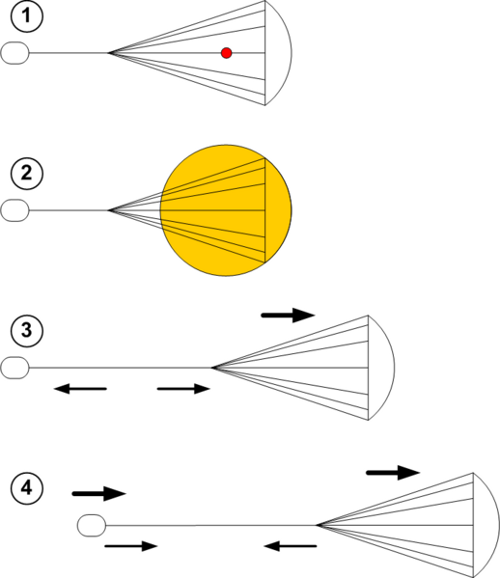
The Medusa project
It was planned that the ship would reach a speed of 4.5% of light and thus be able to reach Proxima Centauri in 100 years. This was more than the Daedalus project, but the ship was supposed to not only fly past a nearby star, but also enter orbit around it and conduct a detailed study of it. The project again remained unrealised.
In 1990, the British Interplanetary Society returned to explosive flights. It developed the Medusa project, an original device in which nuclear charges exploded not behind the ship but in front of it, and the blast wave pushed not the ship itself but the sail attached to it by cables. In this way, it was planned to achieve a specific impulse of 50 or even 100 thousand seconds.
Prospects for pulse propulsion spacecraft
It’s evident that all of the pulse propulsion spacecraft projects were incredibly ambitious, but none of them ever made it to the practical stage. No matter how tempting the prospect of almost instantly gaining speeds that would allow us to reach other stars in a few decades, no one is going to detonate dozens or hundreds of atomic bombs to do so.
And the point here is not even that the launch of such a ship could cause numerous problems on Earth. It’s just that over all these decades, we have not yet established what will happen to a structure that will be subjected to hundreds of nuclear explosions. It is quite possible that this concept is simply impossible.
However, new designs continue to emerge, and they reflect a clear trend: gradually, pulse propulsion spacecraft are moving away from the original idea of an external explosion of almost conventional atomic bombs and instead are moving towards micro-explosions inside a magnetic field-protected inner chamber, followed by plasma acceleration by a magnetic nozzle. It seems that this will be the main way of evolution of nuclear pulse propulsion engines in the future.

